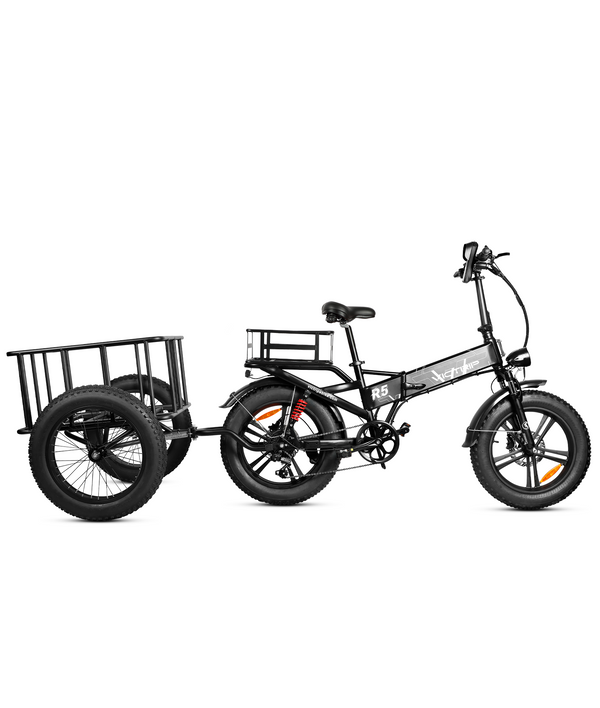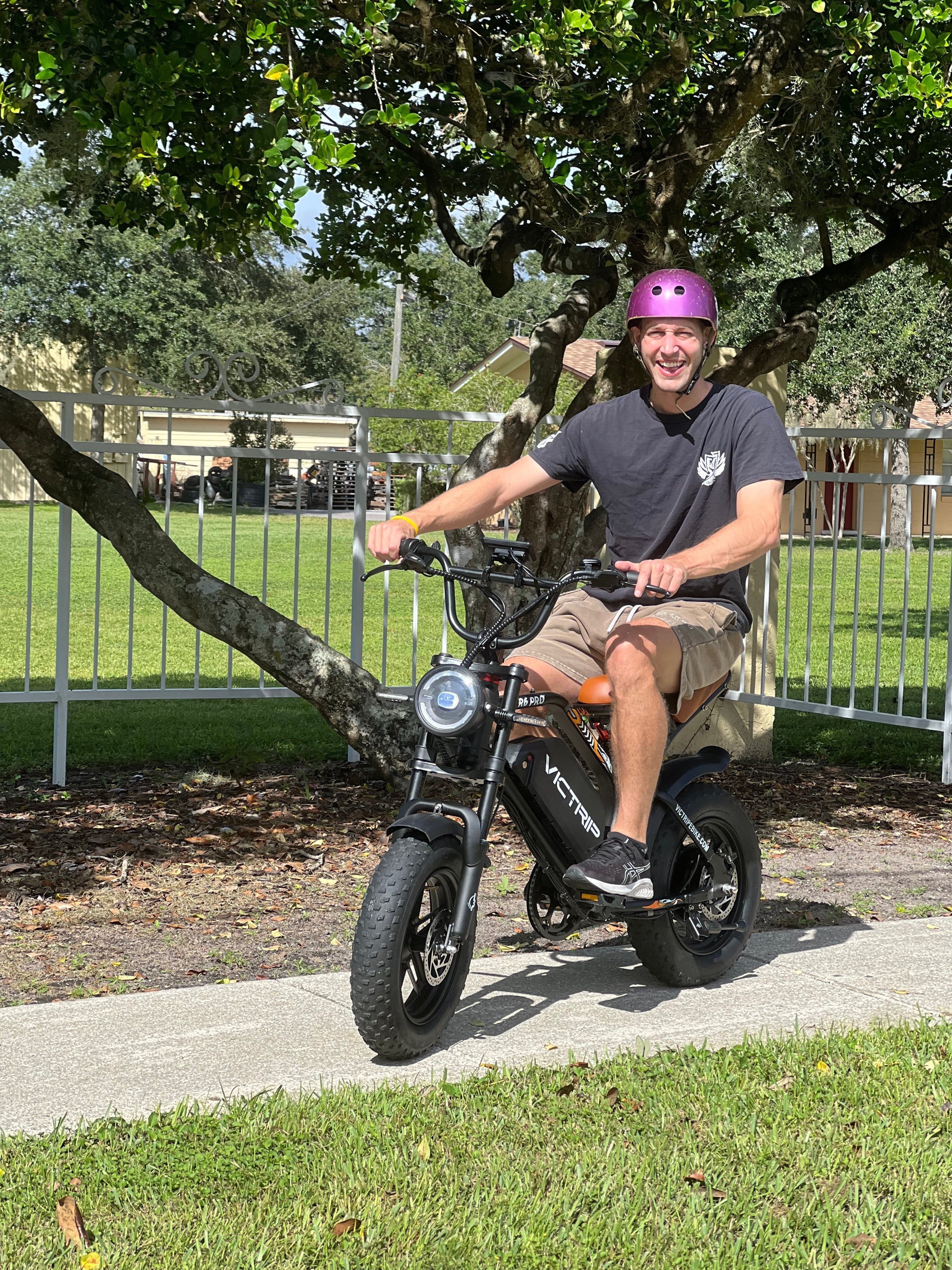An ebike trailer can transform how families move, play, and explore together. In a world where time is tight and comfort matters, adding an ebike trailer to your gear lets you carry kids, pets, picnic gear, and supplies while staying active and reducing car trips. This article explains why an ebike trailer is such a game-changer, walks you through choosing the right model, and gives clear, practical advice for safe, joyful family outings.
Why an ebike trailer changes family outings
Families often juggle competing needs: safety, convenience, room for stuff, and time. An ebike trailer answers those needs simultaneously. Put simply, it adds capacity and calm to rides — you can bring a toddler, a set of soccer gear, and a weekend camping kit without cramming everything onto a seat or your back.

Real-world experience: parents and kids
From my experience advising families and testing gear, the first ride with a trailer often changes expectations. Parents report that outings become less rushed, kids nap more comfortably, and stops happen for exploration rather than car shuffling. That kind of lived experience is valuable — it shows the trailer's benefit in everyday life, not just on paper.
Environmental and lifestyle benefits
Choosing an ebike trailer supports low-emission travel for short trips. Rather than driving to the park, you can pedal with assistance, pull a trailer stacked with essentials, and keep the car for longer hauls. That shift reduces local traffic, lowers fuel use, and often improves family cohesion because the travel itself becomes part of the outing.
Top 10 benefits in detail
Below are the ten most concrete ways an ebike trailer improves family outings — each explained so you can see the direct payoff.
Comfort and cargo capacity
A well-designed trailer carries bulky items that don’t fit on racks — strollers, coolers, folding chairs, tents, and more. Because weight sits low and behind the bike, the ride is more stable than overloaded racks or heavy backpacks. That comfort encourages longer trips.
Safety and stability improvements
Modern trailers include low centers of gravity, secure hitch systems, and reinforced frames. Compared to towing massive loads on a rear rack, a purpose-built ebike trailer improves handling and reduces the chance of surprise wobbles.
Versatility: groceries to camping gear
You can switch from grocery runs to family picnics with a quick reconfigure. Many trailers accept modular inserts — seats for children, cargo boxes, or cargo nets — so one trailer serves multiple roles.

Cost-effectiveness vs. car trips
Short trips by trailer plus ebike reduce fuel and parking costs. Over time, families see real savings — especially where one-way errands are frequent. Add in lower insurance and maintenance, and the financial argument grows stronger.
Accessibility and inclusivity
For caregivers with limited mobility or kids who tire quickly, an ebike trailer opens access to outdoor time without excluding anyone. Trailers let families include grandparents, toddlers, or even medium-sized pets comfortably.
Weather protection and comfort features
Many trailers come with splash guards, removable canopies, and breathable liners. That means rainy-day plans can stay on, and naps happen in a cozy, sheltered space.
Easy loading and quick hitching
Most modern ebike trailers feature quick-release hitches and low decks, letting you load bulky items or buckle kids in without wrestling the equipment.
Reduced wear-and-tear on bikes and riders
When heavy cargo moves to the trailer, the ebike stays balanced and components last longer. Riders also experience less strain, especially on longer outings.
Enhanced social and developmental benefits
Family rides with trailers become routine adventures. Children exposed to regular outdoor travel learn navigation basics, gain sensory experiences, and often develop longer attention spans on outings.
Encourages active, sustainable habits
An ebike trailer lowers the barrier to swapping short car trips for assisted pedaling. That habit change can be the gateway to an overall healthier and greener family lifestyle.
Choosing the right ebike trailer
Picking the correct trailer is critical. A mismatch leads to frustration or safety issues. This section helps you match features to family needs.
Frame, hitch, and compatibility
Check your ebike’s frame and rear axle type. A sturdy steel or aluminum frame ensures better load stability. The VICTRIP Ebike Trailer, for instance, uses a solid metal structure and a universal hitch compatible with most electric bikes — including the VICTRIP R5, R6, and S10 series.
TOP PICK

VVICTRIP® Electric Bike Trailer
$499.00
Load capacity and size
Estimate your typical payload: kid(s) + gear or groceries + extras. If you expect to carry 60–80 lbs (27–36 kg) regularly, choose a trailer rated above that to keep a safety margin. Size matters — narrower trailers handle better in bike lanes, while wider decks suit bulky camping gear.
Single-wheel vs. dual-wheel
A single-wheel ebike trailer tracks behind smoothly and steers well, but it can feel tippy if loads aren't balanced. Dual-wheel trailers are more stable and typically offer higher payloads. Think about how you ride: tight urban paths favor narrow single-wheel models; park trails and camping runs often fit dual-wheel trailers.
Read More: How to Choose Between Single-Wheel and Dual-Wheel Ebike Trailers?
Weather protection and accessories
If you live somewhere rainy, look for full-coverage canopies or add-on rain covers. Reflective trim, integrated lights, and high-visibility flags improve safety. Convertible seat kits make trailers useful year-round.
Safety, setup, and maintenance
Using an ebike trailer safely involves correct setup, routine checks, and some modest maintenance. Here’s a practical guide.
Pre-ride checklist
Before every outing, check:
-
Hitch secure and locked.
-
Tires inflated to recommended pressure.
-
Load balanced evenly; heavier items low and centered.
-
Lights and reflectors functional.
-
Safety flag and harnesses (for child seats) in place.
This simple checklist prevents most ride problems.
On-the-road best practices
Ride predictably. Allow extra stopping distance when towing a loaded trailer. Take corners slightly wider and slower. Signal early — other road users may not immediately notice the trailer’s presence. If you have regenerative braking on your ebike, practice braking with the trailer attached in a safe area to understand stopping distances.
Routine maintenance
Inspect the hitch for cracks or wear, lubricate moving parts according to the manufacturer’s guidance, and periodically check wheel bearings and spoke tension. Replace worn tires promptly because trailer loads increase tire stress.
Planning perfect family trips with an ebike trailer
Trip planning makes outings smooth and fun. Whether you’re doing a two-hour park day or an overnight micro-camp, these practical tips help.
Packing lists for day and overnight trips
Day trip essentials:
-
Water, snacks, picnic blanket.
-
First-aid kit and sunscreen.
-
Lightweight folding chairs (if desired).
-
Tools: pump, multitool, spare tube.
Overnight add-ons:
-
Lightweight tent and sleeping bags.
-
Compact stove and cookware.
-
Extra clothing layers and rain gear.
For example, with the VICTRIP Ebike trailer’s generous size (28" × 25" × 30" ≈ 70 × 62 × 74 cm) and 300 lbs capacity, it easily fits a full weekend camp kit.
A dedicated cargo bag for the ebike trailer keeps gear organized.
Choosing routes and avoiding hazards
Prefer dedicated bike lanes, greenways, and low-traffic streets. Check for steep grades — long uphill hauls can strain your battery when towing a loaded trailer. For urban outings, map routes with widened curb cuts for easy sidewalk-to-path transitions.

Timing and pacing
Plan for frequent stops, especially with kids. Break a longer route into engaging waypoints — playgrounds, ice-cream stops, or nature spots. That keeps youngsters motivated and makes the ride an adventure rather than a commute.
Real-life examples and mini case studies
Here are brief, anonymized case studies drawn from tested scenarios and parent reports to show outcomes:
Case A — Weekend Park Runs: A family replaced two short car trips per week with ebike runs using an ebike trailer. They saved on fuel and reported more relaxed outings. The trailer’s canopy kept a toddler comfortable during afternoon naps.
Case B — Farmers’ Market & Groceries: A couple used a dual-wheel trailer for weekly market runs — it carried bulk produce plus a small cooler. They noted fewer car errands and more frequent neighborhood visits.
Case C — Micro-Camping: On a short camping trip, a family packed tents and cooking gear into a trailer. The ebike handled mixed gravel and park-road sections; everyone reported the trip felt more like a mini-adventure than a chore.
Conclusion
An ebike trailer can profoundly improve family outings by adding capacity, safety, and flexibility. Whether you’re running errands, heading to the park, or packing for a weekend adventure, a well-chosen trailer extends what you can do with an ebike. Use the guidance above — from picking the right trailer to practicing safety checks and planning routes — and you’ll likely discover that family travel becomes easier, greener, and more enjoyable.
FAQs
Will towing a trailer damage my ebike’s motor or battery?
Not if you choose a compatible trailer and don’t regularly exceed your bike’s rated load. Expect somewhat higher battery use; plan accordingly and consider a portable charger or spare battery for long trips.
Can I use any bike with an ebike trailer?
Many trailers are compatible with most bikes, but check for compatibility with thru-axles, hub motors, and disc brake setups. When in doubt, consult the trailer maker or a local bike shop.
What maintenance does a trailer need?
Regularly inspect tires, spokes, the hitch, and the frame for wear. Lubricate moving hitch parts and replace worn tires. Tighten fasteners as part of your pre-ride checklist.
Are trailers allowed on bike lanes and trails?
Rules vary by city and trail authority. Many bike lanes and multi-use trails allow trailers, but check local regulations before planning a route. Where rules are unclear, opt for low-traffic streets or park paths.




Share:
Are Step Through EBike Better for Seniors?
Can 3 Wheel Electric Bikes Replace Mobility Scooters